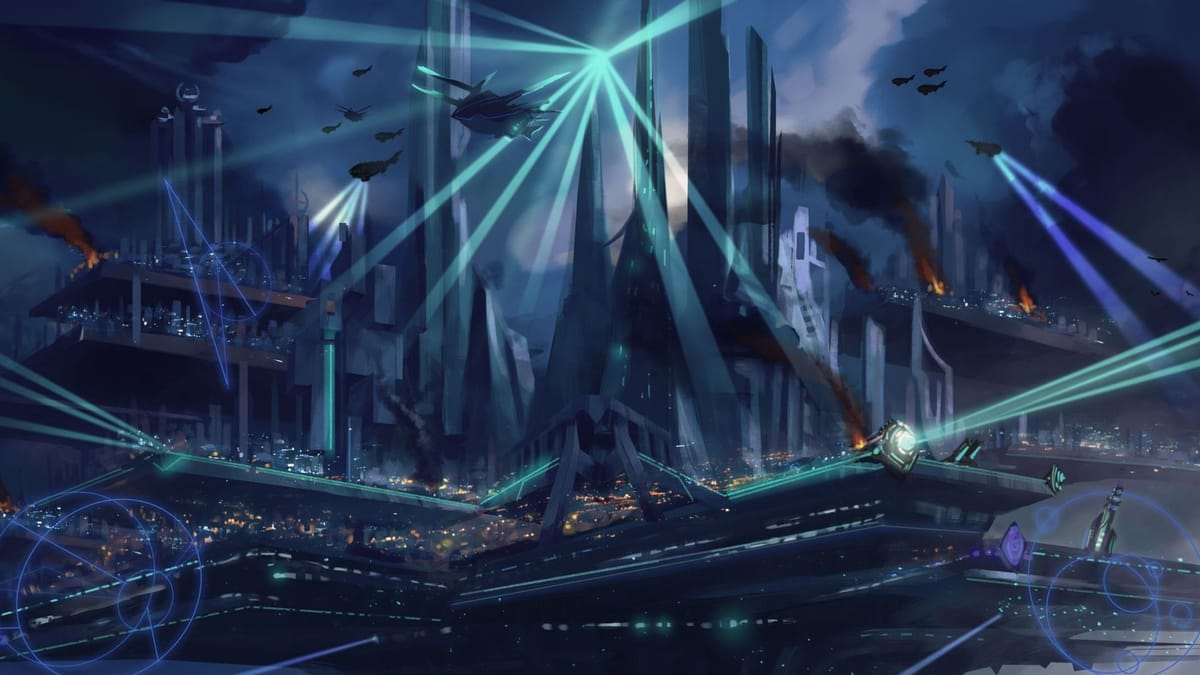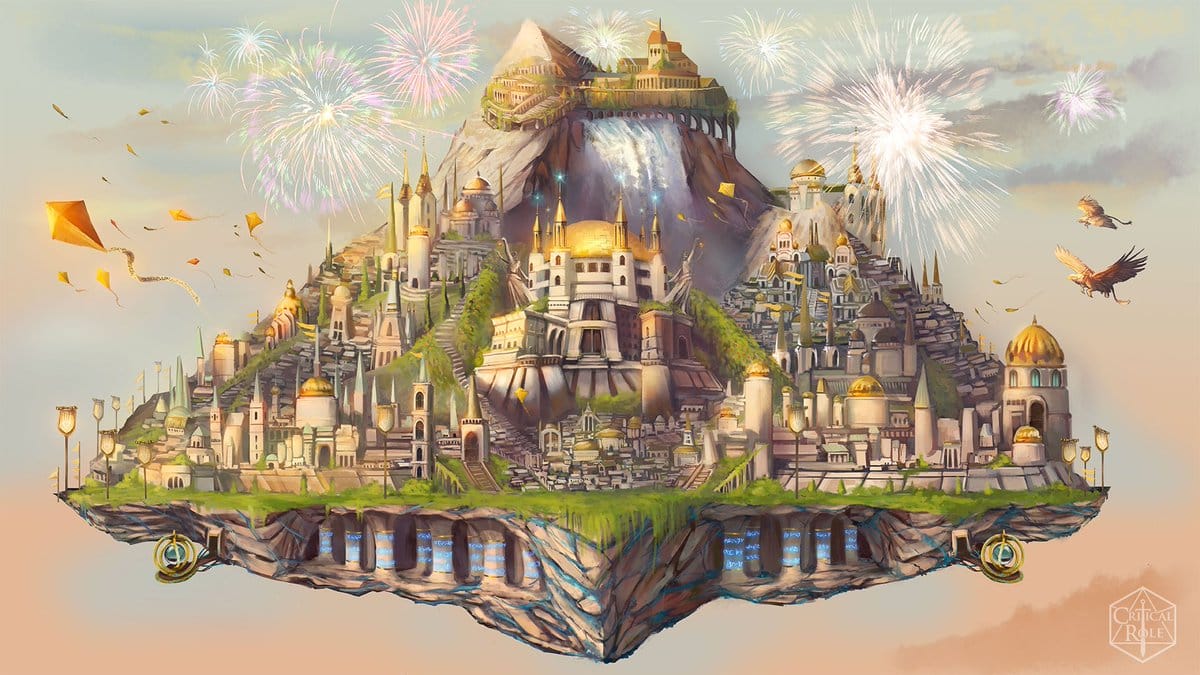Critical Role’s Downfall is a war story told by the bad guys
An interview with Taliesin Jaffe and Abubakar Salim about divinity and actual play.

War is inescapable. A war among the gods, infinitely more so. Critical Role’s three-episode Downfall arc occurs during a momentary ceasefire in the setting’s infamous Calamity, a cosmic war between divine factions that has torn the land of Exandria asunder. After 100 years of fighting, the Betrayer Gods and the Prime Deities only pause their war to destroy the largest source of mortal resistance: the flying city of Aeor.
Using a meta-artform to tell a meta-story, this arc of CR’s ongoing third actual play campaign takes place as a flashback inside the Occultus Thalamus, an ancient piece of arcane technology that recorded the final days of Aeor. Led by Dungeon Master Brennan Lee Mulligan—who returns to the DM’s seat after running last year’s Exandria Unlimited: Calamity, the series which set off the in-universe war—the ensemble for Downfall play as the gods themselves. For the first forty minutes of the initial episode, CR cast members Laura Bailey, Taliesin Jaffe, and Ashley Johnson are joined by Noshir Dalal, Nick Marini, and Abubakar Salim in an ephemeral, ineffable divine state.
Leaning into the awe-inspiring isness that these deities embody prior to creation, the “formless light beings” exist within the realm of Tengar. When their names are spoken, their true, godly names, the audio is edited to be almost unintelligible, while a kaleidoscopic filter covers the actor’s mouths, impressing on the audience that this is beyond our human understanding. Once something new happens, something “terrible” (a word they’ve never had to speak before) disrupts their perfection, the audience witnesses the near biblical trauma these divine beings endure as they are forced out of paradise and into reality. The rest of eternity is simply fallout from this moment, as creation forms in front of them. They each have differing understandings of that day, only knowing that the nothingness that destroyed Tengar will come for them too. It will come for everything.

The rest of the arc occurs in Exandria, a century after the start of the Calamity, with the six performers embodying physical avatars of their respective gods. Despite representing different sides of the war, the six have called a ceasefire in order to unite against the mages of Aeor who have crafted the Factotum Malleus, a god-killing weapon that threatens their power and renders their intra-class conflict secondary to maintaining status over humanity. Disguising themselves as refugees, they sneak onto the final transport to Aeor and together plot the city’s demise.
Downfall’s narrative is timely, given the war-torn state of our world. What makes it notable is the complex—dare I say explicitly villainous—motivations of the protagonists. The gods of the past wish for nothing more than to maintain their power, even if that means destroying the world in the process. While the main campaigns of Critical Role show that there is life to be had in the wake of such terrible devastation, much like in the real world, the scars of this violence never fully fade—from the land or its people.
Rascal sat down for an email interview with Taliesin Jaffe and Abubakar Salim to discuss their philosophies on playing divine beings, the nature of suffering, and for a bit of lighter fare, some thoughts on the craft of actual play.
This interview has been edited for flow.





